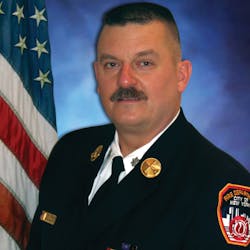The Fire Scene: Speed Kills—or Does It?
Many of us know the saying, “Speed kills,” and the different meanings that it has, in general. Many folks in the fire service have applied the saying to our emergency responses, too—and with good reason. However, when we look at the work that the American fire service performs every day in every community, we all must admit that our work is time sensitive. Time sensitive means that the situations that we are summoned to—structure fires, vehicle crashes, medical emergencies, building collapses, and a host of other dramatic and dangerous events—must be handled as quickly as possible, so they don’t develop into larger and more deadly situations.
Well, if most of our emergency activities are time sensitive and must be handled as quickly as possible to provide the best service to our citizens, then our procedures and guidelines should be written to take that into consideration.
The second hoseline
What’s the point here? We all agree that we want to get our operations underway and completed as swiftly as possible, however, we have people who establish firefighting procedures who say, “At structure fires, the second hoseline should be pulled and supplied from a different engine company than the primary attack line.”
I know that some of us believe that this might be a good idea, because it keeps the supply of each of those two lines separate from the other, which ensures that if one goes down, the other won’t. Now, that might be true, but what about getting our operation underway and completed quickly? Waiting for the second engine to arrive to stretch a second hoseline is unacceptable. Somewhere along the way we must make choices, and, although waiting for the second engine might make this operation safer for us, it dramatically slows the operation, which makes it much less efficient and more dangerous for the folks who are trapped inside of that building.
A second hydrant
Here’s another safer and slower procedure: The backup line should be supplied from a different hydrant.
So, now, even when you have two engines that arrive almost simultaneously and you are going to stretch one line off of each engine, the second engine must locate, test and connect to a different hydrant. Again, this redundancy makes it very safe for the firefighters but really does slow down the whole “rapid fire attack” concept.
Primary & backup supply
One more questionable procedure: Avoid using a single hoseline to supply both the primary and backup lines
Stretching a larger line to a building entrance and inserting a gated wye allows both the primary attack line and the second hoseline to be connected at that point and stretched to different locations in the building. Sure, that could be trouble if the supply line fails, because both handlines would suffer. However, the reality here is that it could take dramatically longer to get two separate lines stretched from the engine to their operating location, which negatively will affect the capability of that fire department to rapidly knock that fire down and rescue trapped or unconscious victims.
Emphasis on speed
Where does this discussion leave us? I believe that it’s a very obvious conclusion. We must turn out to, arrive at and initiate operations at structure fires as swiftly as we can. That means hurry up. That means forget the second supply line. That means that you can stretch two hoselines off of one engine that’s connected to one hydrant. That means that one three- or four-person crew can drop two lines before stretching the first one into the fire, which will speed up the fire attack dramatically.
We must maximize our efforts when we deal with rapidly extending and developing structure fires. When we start to establish difficult-to-complete procedures, we only slow down the entire fireground effort, which only can have serious negative effects on the involved structures and victims.
Every effort and procedure should be designed to support and enhance the rapid fire attack.
About the Author
John J. Salka Jr.
Battalion Chief
JOHN J. SALKA JR., who is a Firehouse contributing editor, retired as a battalion chief with FDNY, serving as commander of the 18th battalion in the Bronx. Salka has instructed at several FDNY training programs, including the department’s Probationary Firefighters School, Captains Management Program and Battalion Chiefs Command Course. He conducts training programs at national and local conferences and has been recognized for his firefighter survival course, “Get Out Alive.” Salka co-authored the FDNY Engine Company Operations manual and wrote the book "First In, Last Out–Leadership Lessons From the New York Fire Department." He also operates Fire Command Training, which is a New York-based fire service training and consulting firm.

